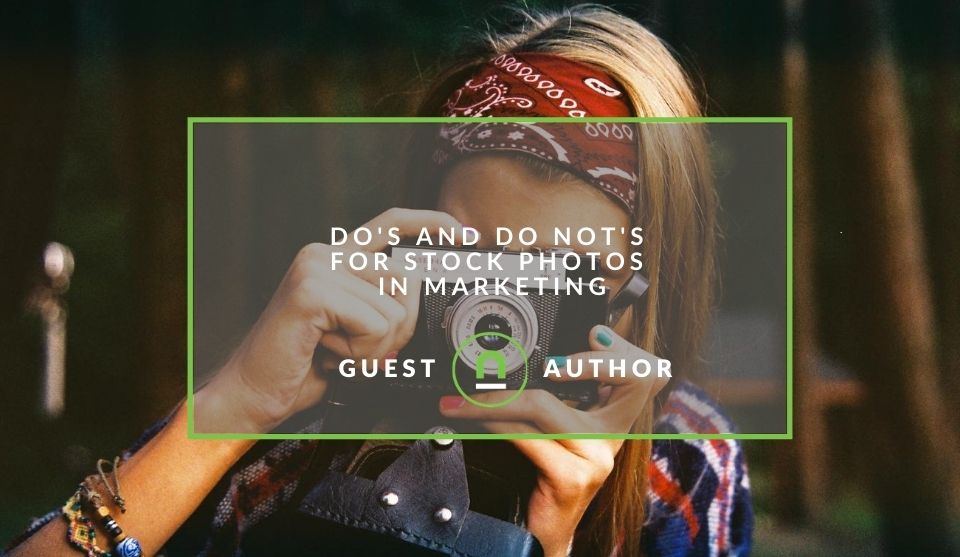Recent posts

nichemarket Advice
How To Pass UTM Tracking To A Third Party Page
10 October 2025

Petrol heads
Tips For Buying A New Car In South Africa
30 September 2025

nichemarket Advice
19 FREE Business Directories In Mexico
27 September 2025

Press Releases
Hygiene Heroes Launches to Champion Cleaning Quality and Safety in South African Businesses
25 September 2025
Popular posts
Extravaganza
Trending Music Hashtags To Get Your Posts Noticed
24 August 2018
Geek Chic
How To Fix iPhone/iPad Only Charging In Certain Positions
05 July 2020
Extravaganza
Trending Wedding Hashtags To Get Your Posts Noticed
18 September 2018
Money Talks
How To Find Coupons & Vouchers Online In South Africa
28 March 2019
Dos and Do Nots For Stock Photos in Marketing
22 August 2020 | 1 comments | Posted by Ivy Attie in Industry Experts
Stock photographs are an essential part of digital marketing. Yes, they do have a bad rep for being cliché or unoriginal. Still, these photos are a saviour for small businesses and bloggers who don't have sufficient resources to hire a professional photographer.
Stock images are available in every niche imaginable and offer an instant solution to your visual requirements. The key is to choose tastefully and avoid the monotony that is a standard part of stock photographs.
Here is how!
Don't: Pick random images
It might be time-saving to pick the first picture that comes in the search results on the stock photo website. But, does the image resonate with your brand and product? Will it complement the tone of your content? Would it help illustrate the message you are trying to convey?
Probably not!
Merely going with any picture that fails to match your context will likely confuse the readers – and ruin your chances of interacting with the audience. Instead, dig a little longer.
Make use of the search filters available on the stock photo sites to narrow down the selection. It may take a little effort – but worthwhile when it comes to the results!
Do: Match the overall aesthetic
Marketers often make the mistake of using images that don't match their website's overall branding. But did you know that using the same colours, fonts, tone of voice, and ''feel'' in your marketing material can even help increase your business revenue?
For example, are you an event management company that specialises in birthday parties? Then look for photos that are lively and colourful to match the nature of business.
On the other hand, go for pictures with deep, dark colourings for blogs that touch on serious matters.
Don't: Forget to read licensing details
Whether you choose images from free photo sites or go for premium versions: make sure to check the licenses and copyright details to ensure you are using the photos legally.
Generally, stock photos come with a Public Domain or a Creative Commons Zero license. This allows marketers to freely use the pictures in both – commercial and non-commercial activities.
Most of the websites also give the freedom to modify the images in any way they want. But specific clauses depend on each unique resource, and failure to comply with them can lead to hefty fines, lawsuits, and even penalisation of websites.
Do: Edit the pictures
As mentioned above, most stock photos websites give you the liberty to edit images as per your requirements. So be creative with the photos. Make edits, add filters, and experiment with the effects to make your pictures different from the generic variety available on the internet.
But again, make sure that the stock photo agency you are using allows modification of all sorts.
Don't: Be reliant on stock photography alone.
Stock photos are great and widely used by businesses. But TOO much of anything can appear repetitious and do more harm, then well for your online reputation.
Try mixing up stock photos with some original images. Add other forms of visuals like video, Infographic, and memes to break up the stock photos you are using. Experiment with the camera in your smartphone and take some shots of the ''crew'' at work to show your side.
Do: Optimise images for search
Like content, the images you use in your marketing need to be optimised for better ranking in search engines. Add an ALT Text or a small caption describing the image you add. If the picture fails to load for any reason – the ALT Text will appear in its place to explain the content.
Moreover, the primary purpose of ALT Text is to describe the image (via screen reader) to internet users who are unable to see. This practice makes your web page more accessible to the visually challenged and makes the online experience equal.
Do: Endorse if not yours
You are likely to find many images on stock photo sites that seem like a precise ''fit'' for your business or brand.
For example, a picture of a watch similar to the ones you are selling on your eCommerce store. Or a group of friends enjoying coffee at a café that looks somewhat like the premises you are advertising.
However, forging a stock photo as your own will build distrust with the consumer when they ultimately decide to convert. To increase loyalty, it's better to remain true about your offerings and avoid representing your products/services with images that don't belong to you.
Do: Check the quality
Stock photo sites get a lot of submissions from photographers around the world. Most of them, especially those offering photos for free, lack the resources required to check each image thoroughly. In this case, you may find some images that are over-pixelated or blurry.
Avoid using photos with poor quality as they provide no value to the audience and create a poor reputation for your brand.
Don't: Go for generic photographs
When it comes to stock photographs, some photos are more cliché than others. They are so common that we see them EVERYWHERE! A picture of a faceless man pointing at floating objects, unenthusiastic models cheering with a glass of drink, two businessmen shaking hands, and 3D figures working on a laptop are just some examples of overused pictures on the internet.
Don't settle for such photos. Instead, spend some more time searching for images that are realistic and unique enough to use.
Do: Remember these tips
Stock photos may have a bad rep in the world of marketing. But truthfully, free and cheap stock media sites can save the day – especially if you are looking to develop an online store or a blog on a tight budget. And they are as effective as customised images if you know how to source them correctly.
With these helpful tips, we are sure you will find a way to make stock photographs work for you!
Good luck!
Tell us your story
Would you like to write for nichemarket just like Ivy has? Find out how to submit a guest post and when you're ready, you can contact us.
Are you looking to promote your business?
South African businesses can create your free business listing on nichemarket. The more information you provide about your business, the easier it will be for your customers to find you online.
Registering with nichemarket is easy; all you will need to do is head over to our sign up form and follow the instructions. If you require a more detailed guide on how to create your profile or your listing, then we highly recommend you check out the following articles.
Recommended reading
If you enjoyed this post and have time to spare why not check out these related posts and dive deeper down the rabbit hole that is the images and photography.
You might also like
Hygiene Heroes Launches to Champion Cleaning Quality and Safety in South African Businesses
25 September 2025
Posted by Shamima Ahmed in Press Releases
Hygiene Heroes’ launch in South Africa - a fresh initiative promoting better hygiene, awareness and healthier living in local communities.
Read moreExploring The World Of Online Trading In South Africa
10 September 2025
Posted by Gabriela Pelayes in Money Talks
Dive into online trading in South Africa. Learn about the market growth, find local platforms, market analysis, and strategies to start your trading ...
Read more{{comment.sUserName}}
{{comment.iDayLastEdit}} day ago
{{comment.iDayLastEdit}} days ago
 {{blogcategory.sCategoryName}}
{{blogcategory.sCategoryName}}

